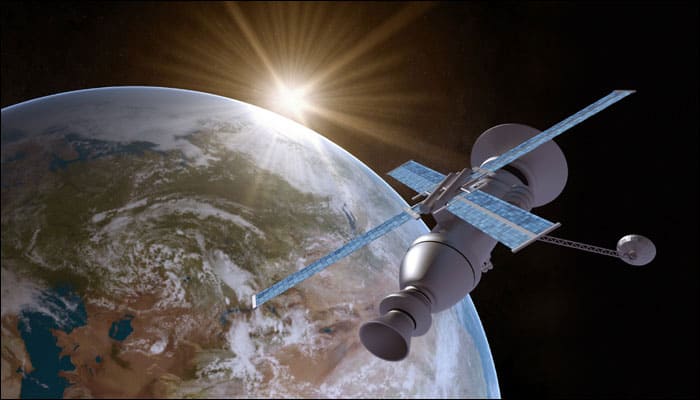WASHINGTON: The reason we know today just how much ice is melting in Greenland and Antarctica is because of a pair of satellites, launched in 2002 by NASA and the German Research Centre for Geosciences (GFZ). Now, they are set to be replaced by a more modern duo. A SpaceX Falcon 9 rocket is scheduled to blast off at 3:47 pm (1947 GMT) Tuesday from Vandenberg Air Force Base in California, hoisting into orbit the spacecraft known as GRACE-FO, a follow-on to the prior, 15-year mission known as the Gravity Recovery and Climate Experiment (GRACE).
How to measure water from space?
Two satellites, each the size of a car, will circle the Earth at a distance of 137 miles (220 kilometers) from each other. They will be flying about 310 miles (490 kilometers) above the Earth for the next five years. According to the laws of physics, the slightest variation in mass on Earth modifies the pull of gravity on satellites. When the lead satellite passes over a mountain, it will get slightly farther from its twin for a few instants because of the extra mass in this area and a slightly stronger pull of gravity.
These slight variations in distance will be constantly recorded by the spacecraft, because each shift signals a change in mass on the planet underneath.
The satellites use a monthly reference point, because unless there is an earthquake or other unusual event, only water has the capacity to change that fast.
Water always has mass, whether it is in the form of liquid, solid or gas.
When ice melts, the oceans’ mass rises. When it rains a lot in a certain region, the volume of the aquifers mounts. The satellites will pick this up, and the data will show that the mass in a certain area was higher than it was in the prior month, or year.
That is how the GRACE-FO satellites will establish a map of the water on Earth, every 30 days, showing which areas have more and which have less, whether above or below ground.
They operate with a precision equivalent to a change of 0.4 inches (one centimeter) in water height across areas of about 211 miles (340 kilometers) in diameter.
What is the point?
The prior mission, GRACE, allowed scientists to gain an understanding of how much ice Greenland was losing. It was more than they thought, based on ground-observations.
From 2002 to 2016, 280 gigatons of ice melted each year, which led to a sea level rise of 0.8 millimeters.
The satellites were also able to track just how much ice Antarctica was losing, and produced colorful maps that showed losses in red and gains in blue.
The map of California showed plenty of red when it was struck by a massive drought in recent years, and scientists and policymakers were about to calculate how low the water table was falling.
Meanwhile, other parts of the globe such as the Okavango Delta in Botswana saw water reserves mount from 2002 to 2016 due to heavy rains.
Renewing the mission will allow scientists to continue to track trends in sea level rise, glacial and ice melt, and the drying up of certain aquifers.
“Water is critical to every aspect of life on Earth — for health, for agriculture, for maintaining our way of living,” said Michael Watkins, GRACE-FO science lead and director of NASA’s Jet Propulsion Laboratory in Pasadena, California.
“You can’t manage it well until you can measure it.”
NASA has spent $430 million on the mission, and the Germans have invested 77 million euros (about 90 million dollars).
AFP

